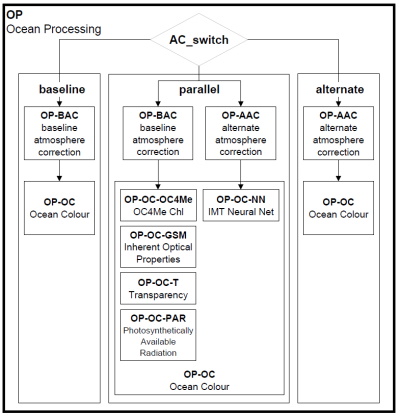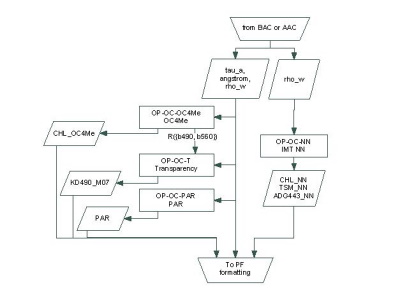Ocean Processing
This part of OLCI Level-2 processing is dedicated to processing water pixels. It is divided into two main tasks:
- atmospheric correction, yielding water-leaving reflectances and, as a by-product, the aerosol load above it
- ocean colour processing, i.e. derivation from the water-leaving reflectances of the suite of products describing the water body itself.
Atmospheric correction follows two approaches; the "standard" or "baseline" approach, further split into atmosphere characterisation and correction, and an "alternative" approach in which atmospheric parameters and water-leaving reflectances are inverted through dedicated neural networks. The selection of "standard" or "alternative" atmospheric correction is achieved using a dedicated switch, configurable via auxiliary data. Current Operational configuration is paralell.
The ocean colour processing provides:
- Chl concentration from the OC4Me algorithm, focused on open ocean Case 1 waters, in which phytoplankton is the main driver of water optical properties
- a set of bio-geophysical products derived from the water-leaving reflectance (and associated error) using a neural net, particularly focused on more complex Case 2 waters in which additional constituents must be considered (scattering by total suspended matter, absorption by detrital and Gelbstoff material).
The outputs from this step are some water constituents (CHL, TSM), absorption (at 443 nm) by detrital and Gelbstoff material and water transparency characterisation (KD490).
Functional Block Diagram of the Ocean Processing Branch

